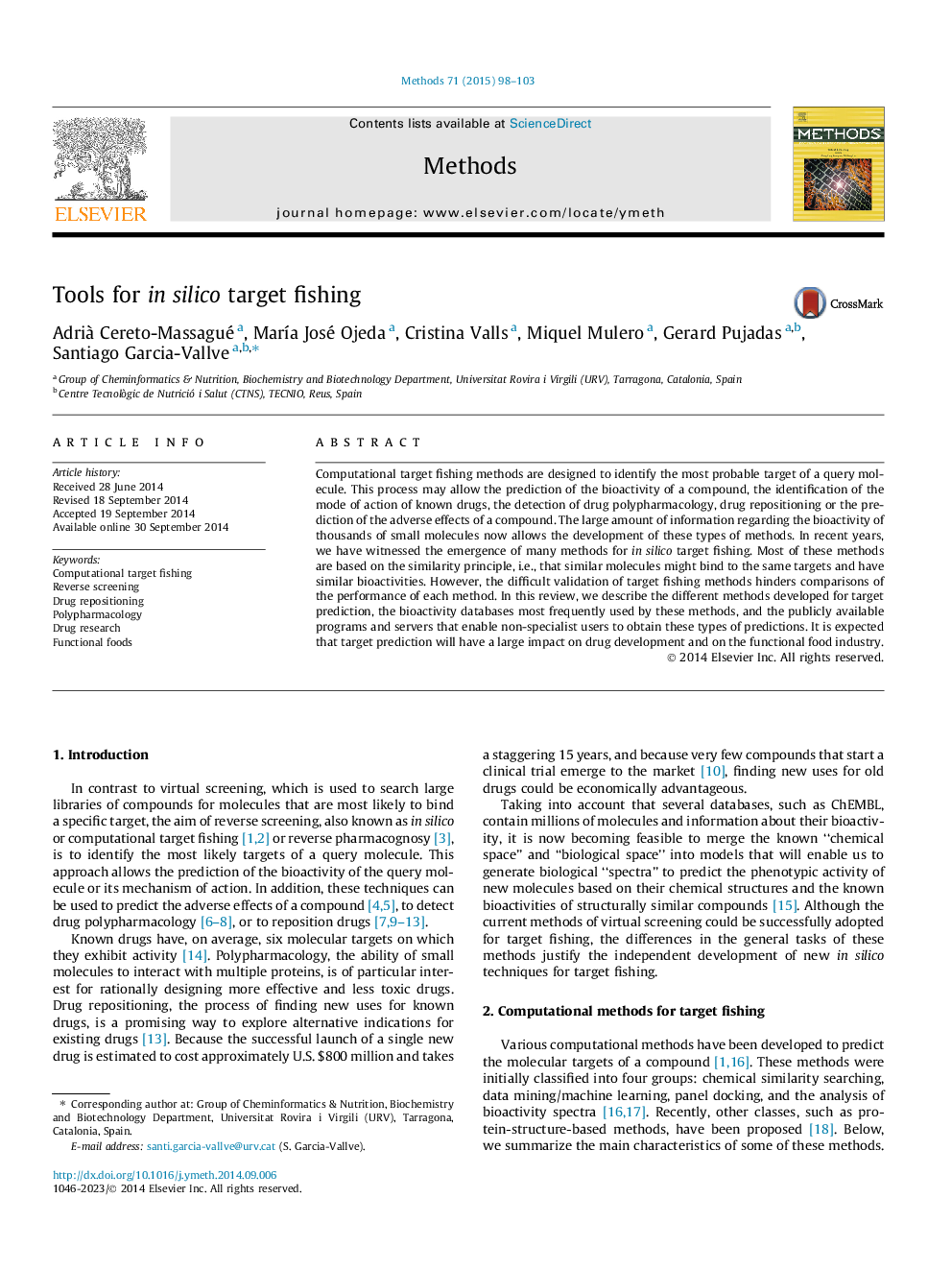| Article ID | Journal | Published Year | Pages | File Type |
|---|---|---|---|---|
| 1993306 | Methods | 2015 | 6 Pages |
•In recent years, a great number of methods for target prediction or drug repositioning have been developed.•Most methods rely upon similarity with molecules whose bioactivity is known and other information for target prediction.•The difficulties in validating predictions hinder comparisons of the performance of different methods.•Target fishing methods could have a large impact on drug research and functional food industry.
Computational target fishing methods are designed to identify the most probable target of a query molecule. This process may allow the prediction of the bioactivity of a compound, the identification of the mode of action of known drugs, the detection of drug polypharmacology, drug repositioning or the prediction of the adverse effects of a compound. The large amount of information regarding the bioactivity of thousands of small molecules now allows the development of these types of methods. In recent years, we have witnessed the emergence of many methods for in silico target fishing. Most of these methods are based on the similarity principle, i.e., that similar molecules might bind to the same targets and have similar bioactivities. However, the difficult validation of target fishing methods hinders comparisons of the performance of each method. In this review, we describe the different methods developed for target prediction, the bioactivity databases most frequently used by these methods, and the publicly available programs and servers that enable non-specialist users to obtain these types of predictions. It is expected that target prediction will have a large impact on drug development and on the functional food industry.
